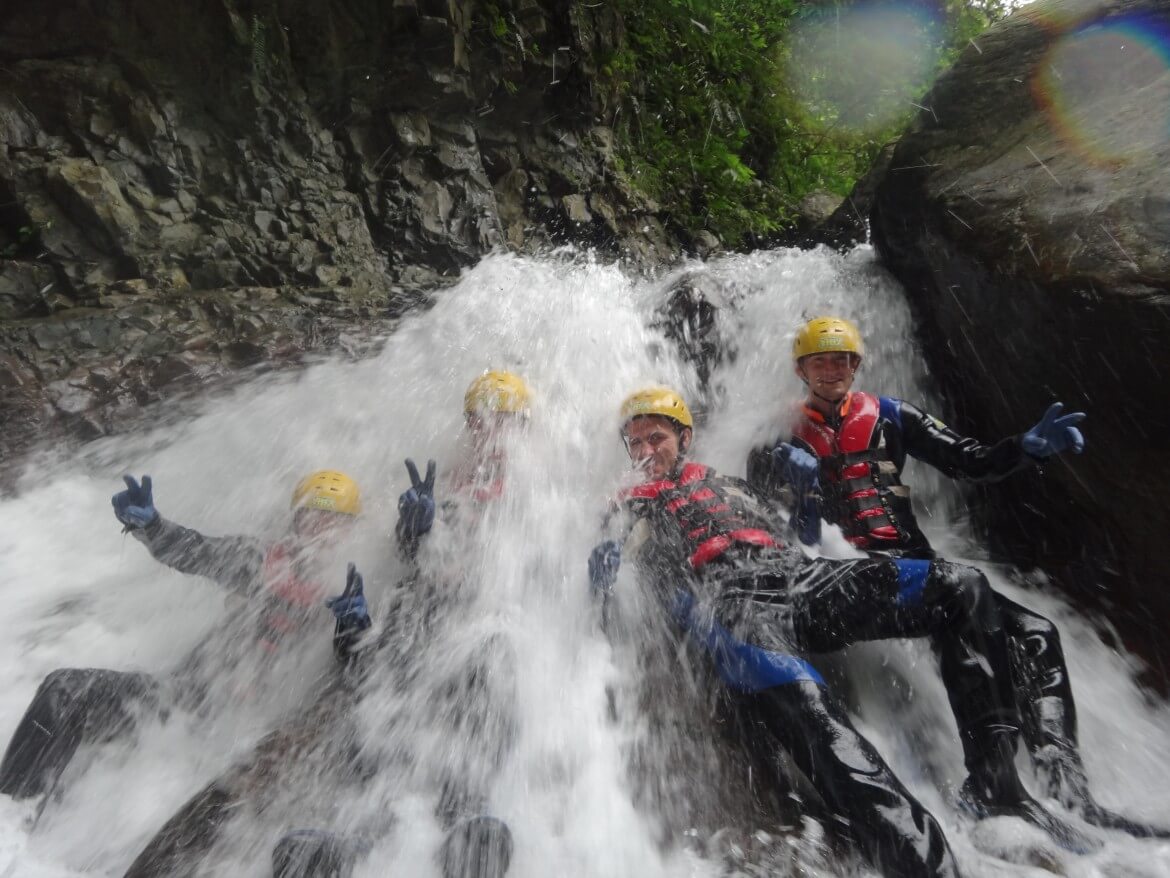Summer is in full force here in Taiwan, bringing with it sunshine, humidity and the occasional typhoon. While there are plenty of activities in Taiwan for those looking to embrace the summer heat , and plenty more for those looking to avoid it , river tracing is one of the few that kind of lets you do both at the same time.
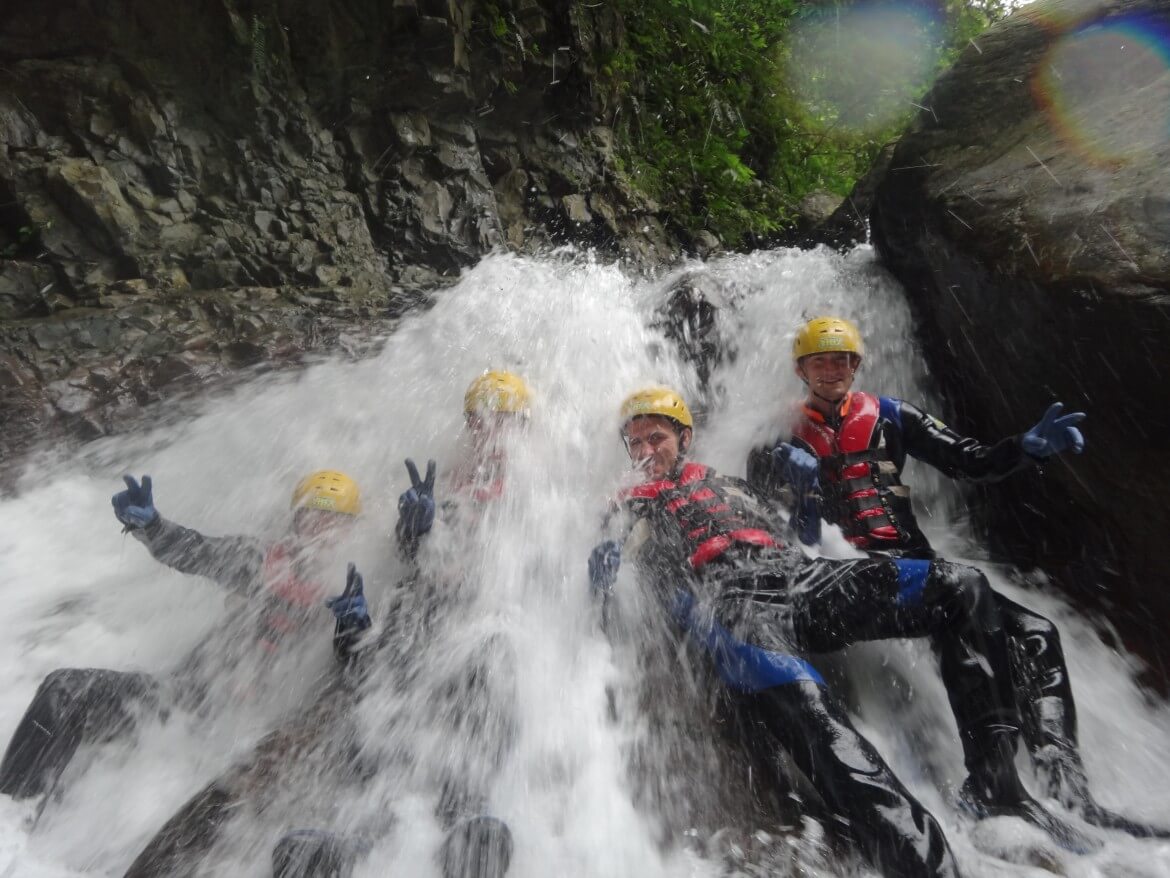
What is river tracing?
Also known as canyoning, river tracing is an increasingly popular sport that combines trekking, bouldering, wading, sliding, and sometimes (depending on the conditions), swimming. A typical river tracing expedition involves heading out to a suitable river during the right weather conditions and hiking through it, sometimes with the current, and sometimes against. Depending on the conditions, you may find yourself walking through an ankle deep stream, wading through waist-high water, climbing over boulders, and even (to quote the Simon and Garfunkel song of the same name) slip sliding away.
And this is where having the right equipment comes in.
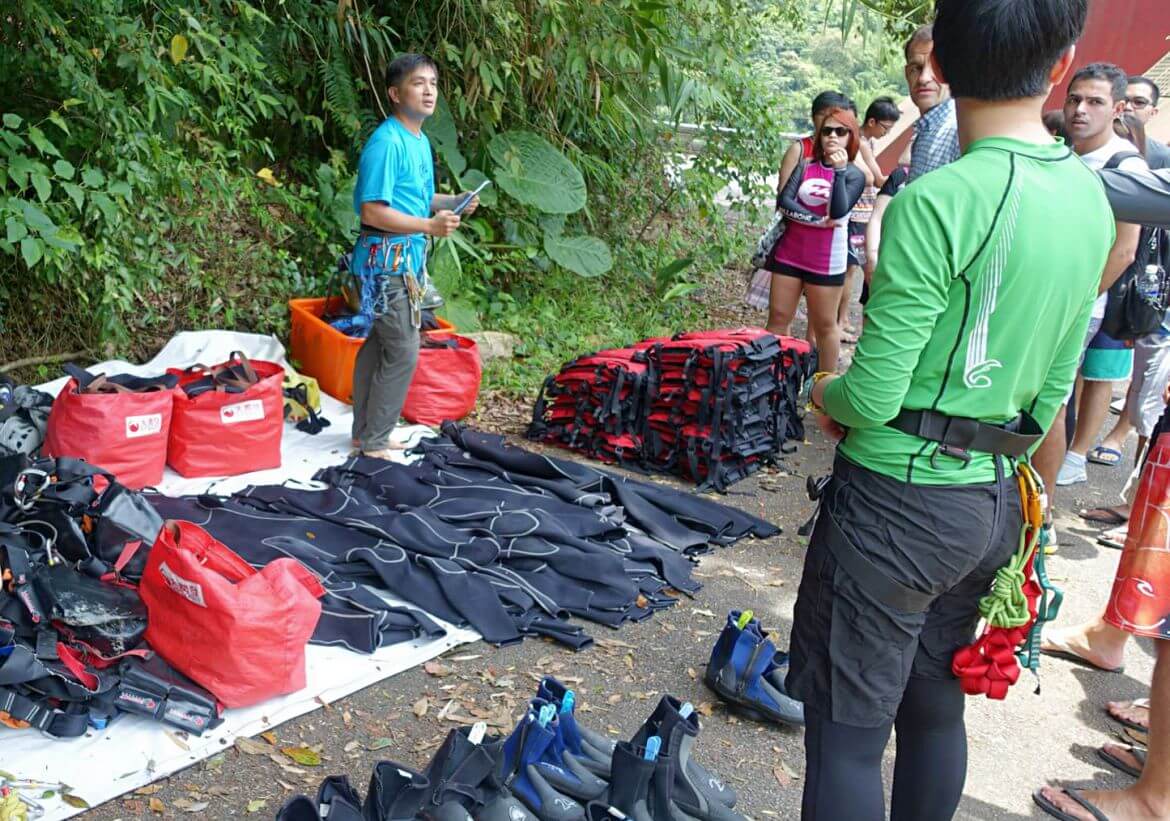
Most river tracers wear booties with a spongy sole (kind of like what you’d use to wash pans if you were doing the job with your feet). Others wear a soft-soled flexible boots with rubber soles. Whatever you chose, you’ll need to be able to get a grip on the varied surfaces of the riverbed. Helmets and life jackets are important as well, as are wetsuits, though in the summer the latter are worn more to protect against abrasion than to regulate body temperature.
Some good spots in Taiwan for river tracing
That the sport is increasing in popularity in Taiwan is hardly surprising, given the number of spots good for river tracing around the island. Fushan is among the closest spots to Taipei city, being located just south of the town of Wulai, easily accessible by public bus (not to mention the sort of place where local restaurants don’t mind seating dripping wet customers). The Yixing river in Taoyuan county is another good spot, and Hsinchu has several rivers suitable for tracing, including the Meihuan and Jinping.
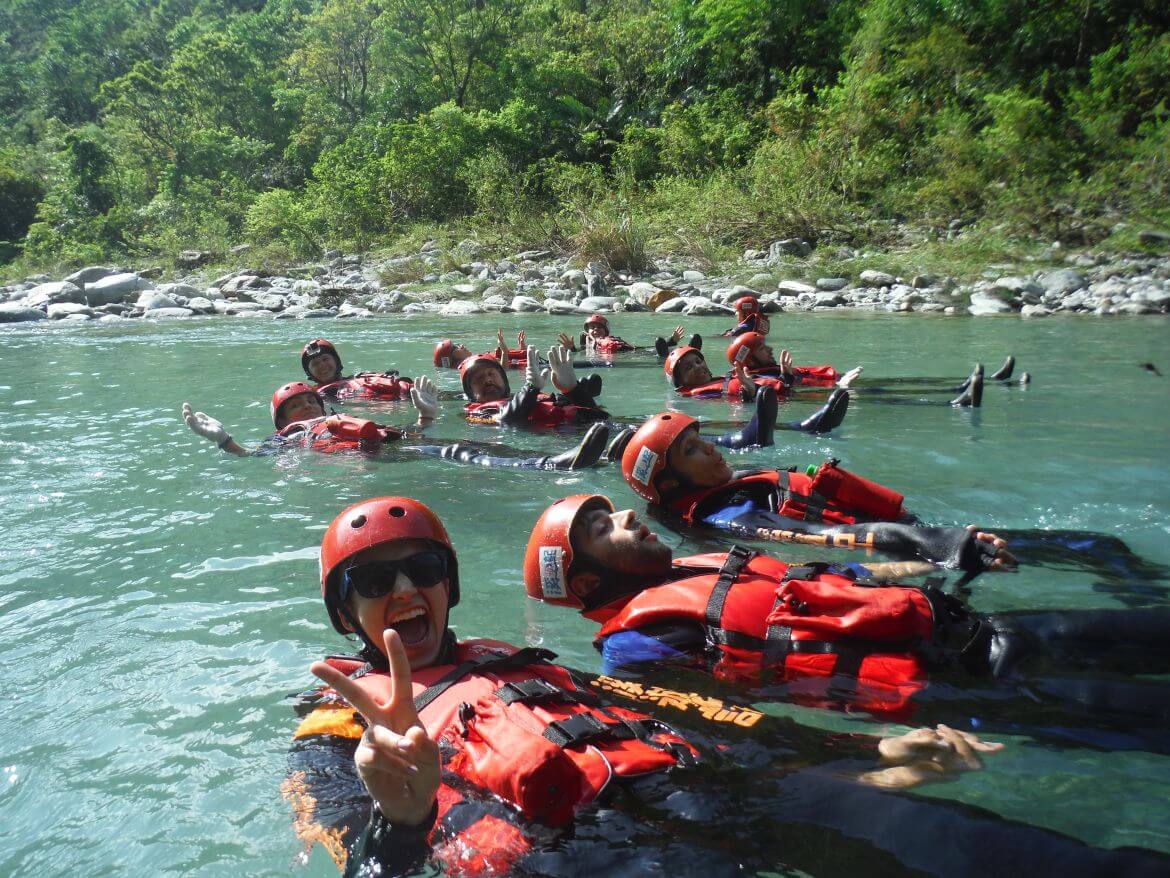
Probably the number one destination for river tracing groups is Hualien, which is home to the Shakadang river, the Sanzhan River and the Feicui valley. But no matter where you go, if you’re new to the sport, you’ll definitely want to hire the services of a local guide. (Interested in doing a two-day river tracing expedition in Taiwan? Check out MyTaiwanTour’s 2-day River Tracing Adventure in Hualien.)
[youtube https://www.youtube.com/watch?v=_ct_eLSdFq0&w=560&h=315]
Why you need a guide
River conditions can change rapidly based on recent rainfall, lack thereof, or (and this is extremely important) rainfall happening somewhere else (generally upriver). For this reason, a local guide is crucial, and not just from the “this guy knows where all the cool spots are” point of view (though this is always a plus). A local guide is important because they’re the ones who are going to know that typhoon Soudelor made major changes to the landscape of a river you’re about to visit.
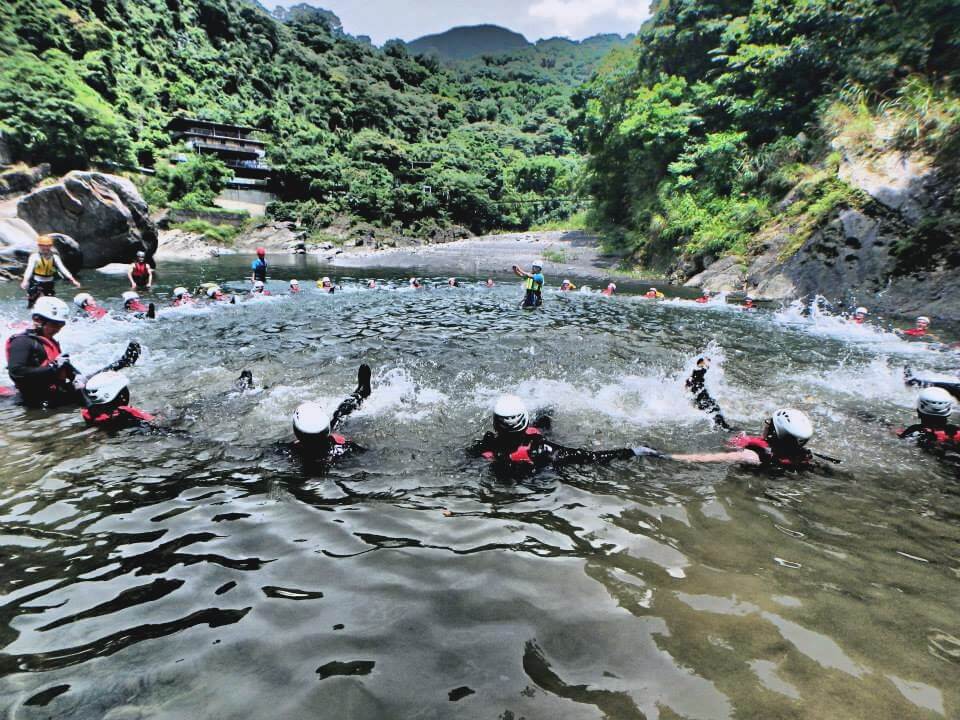
More importantly, your local guide is more likely to know that the dark spot in the corner of the sky way off in the distance indicates a rainstorm happening 40 kilometers upstream. It’s local knowledge like this that can mean the difference between a successful river tracing experience and having your already-exciting journey down the river being hastily (and perhaps fatally) expedited by a flash flood.
Want to read a first person account of a river tracing expedition in Taiwan? Check out this story from Condé Nast Traveler “I Put My Life in the Hands of Taiwanese ‘River Ninjas’“.

